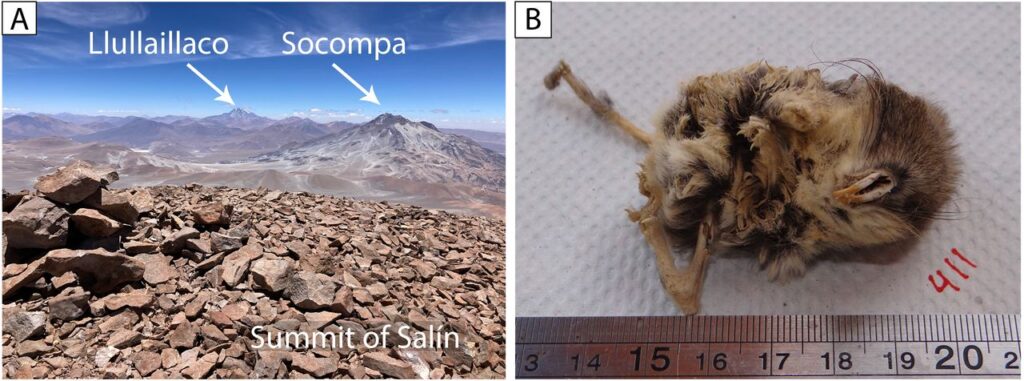Menu
Menu
Nestled atop the rugged summits of the Andean volcanoes in Chile and Argentina, an intriguing mystery unfolds: the presence of mummified mouse bodies. Initially unearthed by archaeologists excavating Incan ceremonial structures and burial grounds, these mummified mice were initially perceived as potential participants in sacrificial rites, intertwined with the spiritual practices of ancient civilizations. However, the veil of time has been lifted by the precision of radiocarbon dating, revealing that these diminutive creatures emerged onto the scene less than 500 years ago, long after the decline of the Incan empire. This revelation prompts a myriad of inquiries into the motivations and mechanisms behind their ascent to such unforgiving altitudes and their remarkable survival in territory that was previously considered uninhabitable.
Volcán Salín, Volcán Púlar, and Volcán Copiapó stand high and mighty, their towering peaks piercing the sky at breathtaking elevations exceeding 6,000 meters above sea level. These lofty summits, shrouded in the mist of altitude and isolation, present a formidable challenge to life as we know it. Yet, amidst this inhospitable realm, a remarkable discovery emerges – the mummified bodies of the leaf-eared mice, Phyllotis vaccarum. Though the mice mummies were first discovered by archaeologists studying Incan history, recent researchers were also able to capture live mice inhabiting another nearby volcano summit at a whopping 6,739 meters altitude. Together with the previously discovered mice mummies, these became the highest altitude record of mammalian life.

In a quest to unravel the mysteries surrounding the leaf-eared mice’s adaptation to extreme altitudes, a comprehensive approach employing genome assembly, genomic analysis, and radiocarbon dating was deployed. This multifaceted investigation aimed to shed light on the genetic and temporal aspects underlying the mice’s colonization of the inhospitable terrain.
The cornerstone of this endeavor was the construction of a complete chromosome-level de novo reference genome of P. vaccarum. Leveraging PacBio Hi-Fi long-read sequencing technology, followed by chromosome-scale scaffolding using Omni-C technology, researchers pieced together the genetic blueprint of these resilient rodents. This sophisticated genomic architecture provided a robust foundation for subsequent analyses, allowing for a nuanced exploration of the mice’s evolutionary history and adaptive mechanisms.1 For the other summit mice, low-coverage whole-genome sequencing was conducted to get a broader picture. This comprehensive genomic analysis unearthed several pairs of close relatives within the Salin samples, hinting at intricate social structures and familial ties among these high-altitude inhabitants. Such findings not only underscore the likelihood of the summit mice representing long-standing resident populations but also challenge the notion of them being transient visitors.
To gain a clearer perspective on the genetic landscape of the mice populations inhabiting these volcanoes, lower-altitude populations were also sampled and sequenced. Comparative genomic analysis revealed striking similarities between the summit mice and their counterparts from lower elevations, suggesting a degree of genetic continuity and shared ancestry. This interconnection between populations across varying altitudes unveils a complex tapestry of evolutionary dynamics, wherein genetic exchange and adaptation play pivotal roles in shaping the survival strategies of these remarkable creatures. Though what drives the mice to ascend such unforgiving heights still remains a mystery.
 100 Enterprise Way
100 Enterprise Way